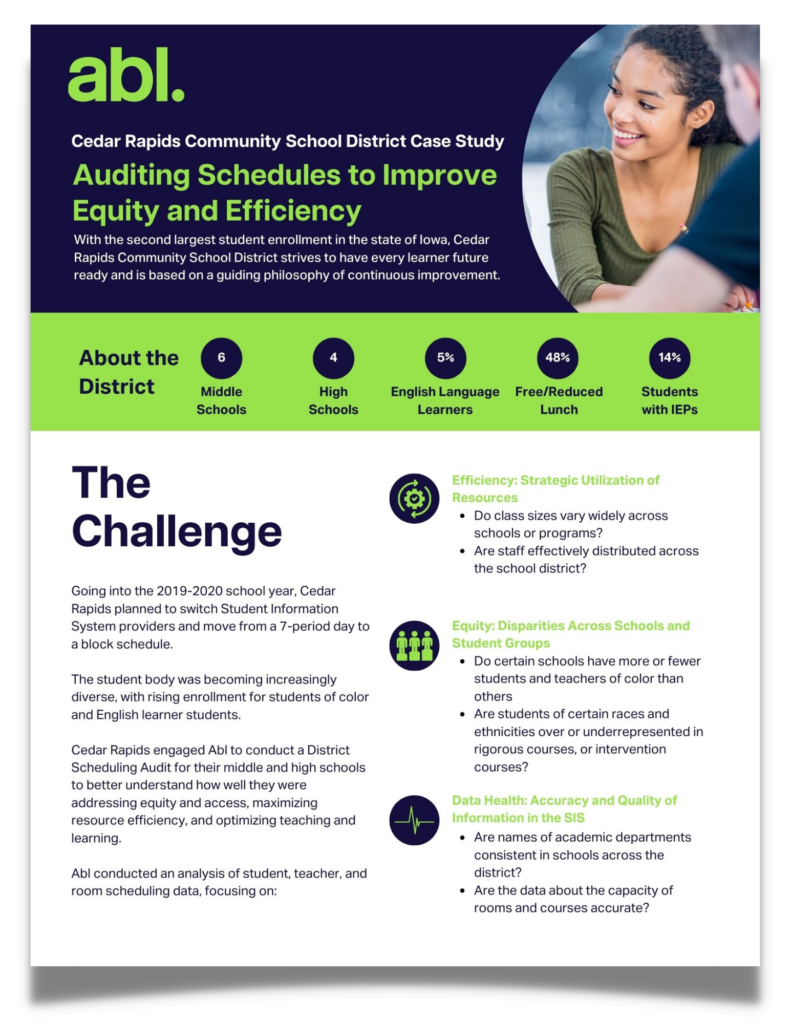Auditing Schedules to Improve Equity and Efficiency
Cedar Rapids Community School District
Problem
Cedar Rapids school district planned to switch to a new Student Information System provider and a block schedule in the 2019-2020 school year. The district wanted an audit of its information systems to ensure efficiency, equity, and data health, specifically looking at class sizes, staff distribution, disparities across schools and student groups, and accuracy of information in the SIS.
Strategy
Cedar Rapids engaged Abl to conduct a District Scheduling Audit for their middle and high schools to better understand how well they were addressing equity and access, maximizing resource efficiency, and optimizing teaching and learning. The audit found disparities in enrollment practices, with white students more likely to be enrolled in rigorous courses, and students of color overrepresented in intervention courses, as well as some schools having significantly higher student loads than others. The third-party analysis helped district leaders identify unintended tradeoffs and increased staff buy-in for changes to the schedule.
Results
Abl’s data analysis helped Cedar Rapids identify enrollment policies that led to inequitable course access, as well as how student loads varied for different teachers at different schools. The audit findings garnered staff support for adopting new data-informed policies, such as adopting an automatic enrollment approach for 9th grade Algebra 1 and implementing a 15-student minimum for courses with low enrollment.
Read More

Cedar Rapids Community School District
6 Middle Schools
4 High Schools
5% English Language Learners
48% Free/Reduced Lunch
14% Students with IEPs
“Working with Abl allowed us to take an objective look at our scheduling data and provided a lens to compare, across the entire district, how different scheduling decisions were impacting students. With that knowledge, we chose to continue certain practices and change others to improve the alignment of educational experiences across the system.“
John Rice | Executive Director of Teaching and Learning

